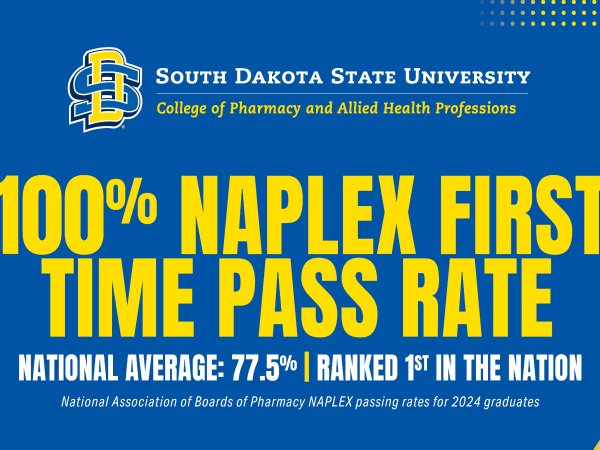By taking a few minutes, students can show their appreciation and gratitude for faculty and staff through the Thank-A-Professor program at South Dakota State.
Kevin Sackreiter, director of the Center for Enhanced Teaching and Learning (CETL), explained the program is another way to say thank you “outside the IDEA surveys and that kind of feedback opportunity.”
Thank-A-Professor has sent more than 400 letters to faculty and staff since it began in 2013, according to Sackreiter.
There has been a spike in submissions to the program thanks to advertising of the program.
Students can write their thank you by going to CETL’s page on SDState. Submissions go to Sackreiter’s office where two copies are printed and sent. One letter goes to the faculty member and the other to their higher up, either a department head or dean.
None of the information is changed in the letter, it’s just copied and pasted to be distributed, Sackreiter said. He has only pulled one letter in seven years because it wasn’t a sincere thank you.
“I’ll admit, I enjoy reading them,” Sackreiter said. “I think it speaks highly of our faculty that so many students genuinely appreciate the work they do.”
Leda Cempellin, professor of studio arts, was touched by the letter she received from a student last semester. She was also surprised by the student going out of their way to use the program.
Cempellin gets thanked often for things that require an immediate response, like from students who need a doctor’s note signed. But receiving a letter “is a whole different level of gratification,” she said.
“As I am growing within the teaching profession, I am becoming more and more aware of how professors are role models and not just content deliverers,” she said.
Often, the students who use the program are not currently being taught by the professor, Sackreiter said, which is something he didn’t expect.
“I thought it would be a little more in the moment,” he said. “We get plenty of that in the moment, but it’s not as much.”
Sophomore communication studies major Olivia Knippling said she may use this program to thank impactful advisers she’s had at SDSU, though she finds the power of a verbal thank you more her style.
“I think it’s more important to tell people thank you in person probably and would prefer to do it that way — at least when I can,” she said.
Whether it’s in person, using the program or emailing a professor, saying thank you is important to the culture of the university, Sackreiter said.
“It creates a really nice learning culture on campus, a supportive culture that I hope students and faculty appreciate,” he said. “It really is a unique place and students do really recognize the work and effort that their faculty are putting into their teaching.”


















